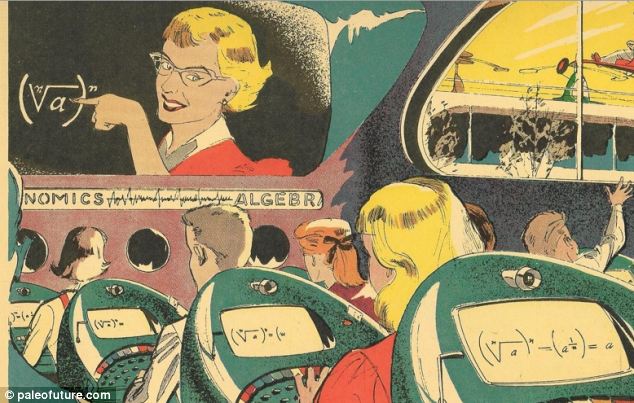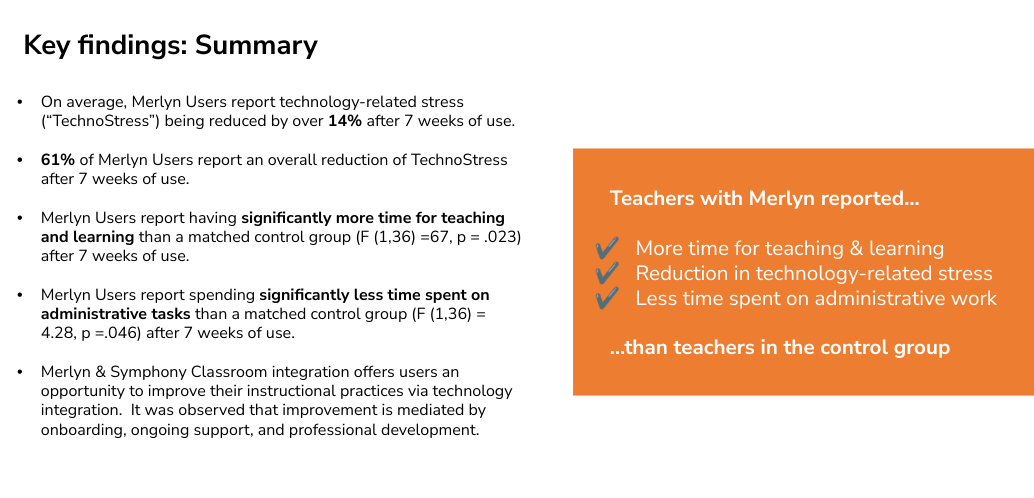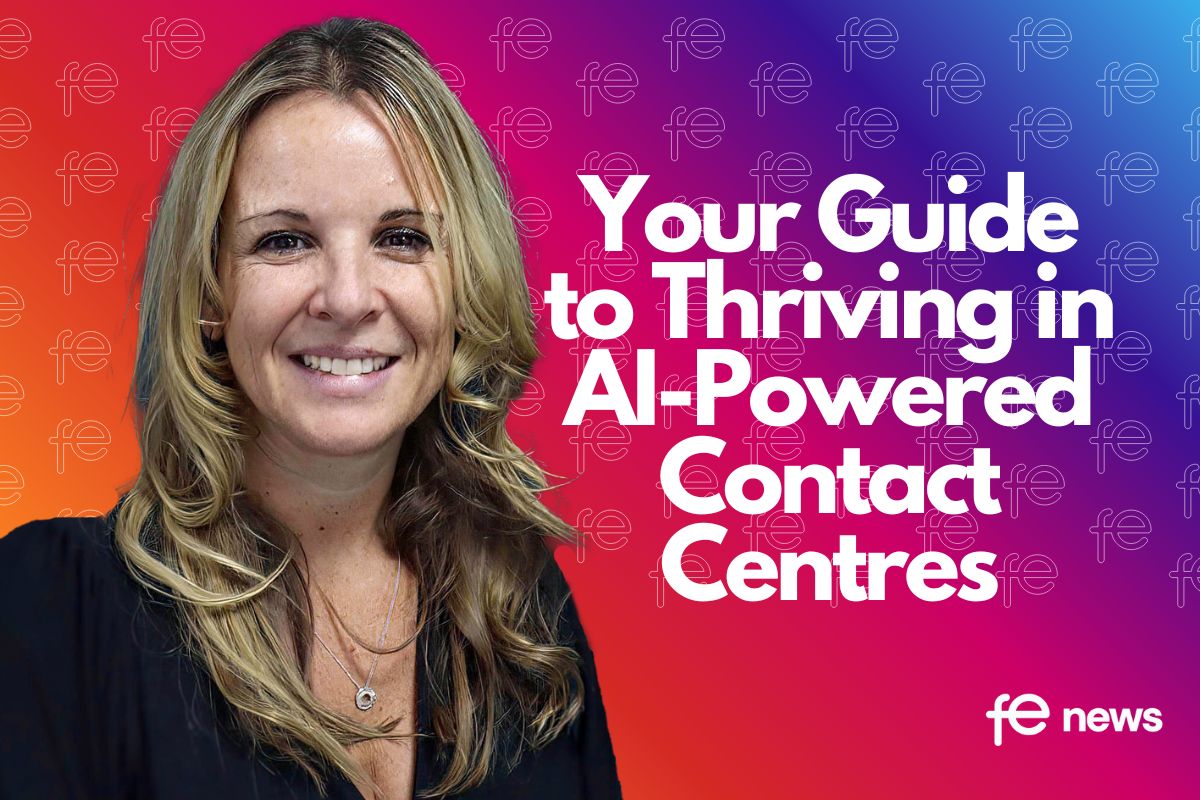Teaching, Learning & Robots: The Rise of Adaptive Learning with Artificial Intelligence

Talking to technology that just works out what we want when we need a little help has moved from science fiction to fact. In my home several rooms now contain a smart device powered with artificial intelligence that I can speak to and it responds. Artificial intelligence (AI) enabled robotics is also playing a greater role in our lives. I recently returned from a visit to Estonia, one of the most digitally advanced countries in the world, where autonomous vehicles are common on the streets either as taxis or delivering groceries to residents. AI, whether powering robotics or just in software, is now a part of the fabric of our daily lives and it’s inevitable that artificial intelligence will play an ever greater role in our world of education.
Lots of definitions of artificial intelligence exist but this one from IBM is as good as any. “Artificial intelligence leverages computers and machines to mimic the problem-solving and decision-making capabilities of the human mind.” IBM.
In the context of education this can mean providing dedicated personal care and support to a student even when the teacher may not be immediately available. The contention of this article is that this application of artificial intelligence (AI) will have a major impact on our world of education and learning in the years ahead perhaps more than any other and we can already see it happening.
AI can increase productivity
According to TechJury AI can increase productivity by more than 40% and 77% of the devices we use on a daily basis feature one form of AI or another. For example, perhaps you’re one of the more than 1.5 billion global users of GMail in which case AI is enabling the automation of your emails saving you time writing them. Coincidentally and purely anecdotally I estimate that it has reduced the time I spend responding to emails by broadly 40-50% mirroring the contention of TechJury on productivity enabled by AI.
For any teacher concerned about the application of AI in the classroom (and we won’t explore all of the potential issues with AI here) the benefits of the intelligent human centred application of AI is a profoundly positive one. Professor Rose Luckin who is a Professor of Learner Centred Design at University College London Knowledge Lab sums it up well when back in 2017 she said “ We need to look at how we design effective solutions to the key problems that we’re facing. And that will need to be a blend of human and artificial intelligence. It’s all about intelligence: which part of the intelligence puzzle is best achieved through artificial means, and which through human means.” We will return to this point later but the early indications are that AI can automate many processes that are not the best use of teaching time and in doing so provide greater freedom for educators to focus on what really matters to them, teaching and learning.
In the article ‘Two Decades of Artificial Intelligence in Education” by Xieling Chen, Di Zou, Haoran Xie, Gary Cheng and Caixia Liu and published in Education Technology and Society (2022) the authors note an acceleration of interest in the application of AI in education over recent years with a particular focus on intelligent tutoring systems, discourse analysis, learner emotion detection and personalised learning among wider areas. This work sits alongside a rapidly expanding volume of academic research exploring these areas and this trend in itself is interesting to me. It highlights the inevitability of the forces at play here which are shaping our world.
Human centred application of AI
In my professional life I am seeing the most exciting possibilities for the human centred application of AI to deliver adaptive learning in our history. It feels like surfing a wave because right here and right now we are in the vanguard of possibilities to apply these technologies to unlock human potential like never before.
In the article “Artificial Intelligence in Education: A High Level Academic and Industry Note” (2022) by Muhammad Ali Chaudhry and Emre Kazim, published in AI and Ethics, the authors argue that the next big shift in how we work, live and learn will be powered by artificial intelligence. The authors specifically illustrate the potential for AI to reduce teacher workloads and to provide unprecedented contextualised learning for students as two areas that will be especially transformed.
The authors note that organisations such as the World Economic Forum have identified sixteen skills referred to as 21st century skills essential for the workforce and areas such as technology literacy, curiosity and adaptability feature in a big way not least because digital disruption is making them more important than ever.
An increasing number of researchers are suggesting that AI can and will play an ever greater role in supporting teachers in these areas. The ability to secure unprecedented insights into learner progress and support requirements is one example where AI is enabling teachers to differentiate their approach to learner support needs in new ways, at the same time as automating routine tasks that are not the best application of a teacher’s higher level skills. Chaudhry and Kazim (2022) argue this process will not just make teachers the “human in the loop” but that its primary purpose is to enable teachers to make better informed decisions when it comes to context relevant learning interventions at the student level. In simple terms, teachers will be able to personalise learning like never before.
A growing body of evidence is already demonstrating the value of this approach. At the International Conference on Artificial Intelligence in Education in 2017 Segal et al adopted an approach along the lines of the ‘human in the loop’ called SAGLET that enabled them to model a process that empowered teachers to intervene when needed in a more targeted way. The evidence suggested that this approach had causality to enhanced learning outcomes. Interestingly in recent times the Covid 19 pandemic has accelerated the capabilities of AI not just because the world had to largely move to online delivery of teaching and learning but also because companies developing leading AI products and services were suddenly able to harness big data like never before enabling them to advance the relevance of AI enabled systems at record speed. In a report titled ‘Shock to the System’ by Educate Ventures and Cambridge University it was noted that companies operating in the education technology sector reported that their biggest challenge during the pandemic was to cope with the number of new customers they had to manage. This rapid acceleration of available data to power better AI systems is shaping our world of learning in profound ways.

AI in education
My contention is that the application of AI in education will be most powerful when it co-creates the learning process with the student, guiding and supporting the learning in an extremely personalised way. Carvalho et al (2022) in their article “How Can We Design Learning In An AI World?” published in Computers and Education: Artificial Intelligence make exactly this point, arguing that both educators and learners must be involved in the co-design of learning in an AI world, and there are two awesome examples of this that I have personal experience of.
Hundreds of millions of educators globally make use of the technologies provided by Google for Education (such as Google Classroom) and in my professional life I get to work closely with the teams at Google who work on such products and services. Google is a world leader in the application of fields such as artificial intelligence to our world of education and some of the latest developments arriving in 2022 from Google for Education are especially exciting in the context of this article. One in particular is called Practice Sets and it provides a highly personalised adaptive learning approach to the curriculum set by the teacher, supporting students who may just need a little extra help when the teacher is not available. It has the potential to make a huge difference to learning outcomes for students who need a little extra support with their assignments and is a great example of the ‘human in the loop’ approach to enabling teachers to support their students in new ways that are impactful.
Approaches like those from Google for Education combine personalised learning with empowering the teacher with unprecedented capabilities to support their students to achieve their learning goals. Additionally it does this through a technology platform that is device neutral (works on just about any device), is easy to use and makes learning better. Shouldn’t all technology work that way?
Reduce ‘techno-stress’ and anxiety
When education technology is designed to help the teacher and student at the design level it can reduce ‘techno-stress’ and anxiety too. This is no small thing. Every teacher I have ever worked with has experienced the stress that can be caused by technology when it doesn’t work as planned, and this should always be a consideration when deciding what technologies best align to the reality of teaching and learning.
On this point another great example of an educational technology solution powered by artificial intelligence that does exactly this is from US based Merlyn Mind (and just for transparency my company has a commercial interest in Merlyn Mind).
A new research publication based on a project led by the University of California Irvine’s Creativity Labs in partnership with the non-profit Digital Promise explored the capabilities of Merlyn Mind’s artificial intelligence technology to streamline routine administrative tasks to free up time for teachers to focus more on their learning. Among the findings were surprising insights into the capabilities of such technology to also reduce technology related stress. (https://www.merlyn.org/blog/3rd-party-research-confirms-that-merlyn-reduces-teacher-stress-and-saves-time)
Merlyn Mind Chief Strategy Officer Levi Belnap has said that if “we can leverage artificial intelligence to get administrative tasks and technology management out of the way teachers will have more time, energy and attention to help each of their students succeed”.
The researchers involved work at two sites, one in Southern California and one in North Carolina, where quantitative and qualitative data was collected from a treatment group and control group composed of elementary, middle and high school teachers. Pre and post implementation surveys on technostress were collected alongside the wider research methodologies deployed and the findings are exciting, noting a reduction in ‘techno-stress’ of 14% on average after 7 weeks accompanied by a statistically significant increase in users reporting more time for teaching and learning in the same timeframe.

Dr Kylie Peppler, Director of The Creativity Labs at UCI and Professor of Informatics and Education talking about the research said “Most edtech companies never work with third-party researchers. I would say probably less than 1% of the industry actually partners with researchers.” Professor Peppler also said “Technostress is very common. When that environment is not going well, all of the sudden that can be a really stressful part of our everyday job. You get a lot of people resisting technologies and also being technophobic, particularly in schools.” This is exactly the kind of challenge that the team at Merlyn Mind set out to help with.
A number of UK educators are already making use of emerging technologies such as the AI from Merlyn Mind including The Sheffield College, Claire’s Court Independent School, Coleg Cambria and City College Plymouth among others and the good news for educators is that as we look to the future these technologies will only get better in helping educators to nurture the potential of their students.
I’ll conclude this article with a thought from the late great Sir Ken Robinson who said “The key to transforming education is not to standardise it, but to personalise it, to build achievement on discovering the individual talents of each child, to put students in an environment where they want to learn and where they can naturally discover their true passions”.












Responses